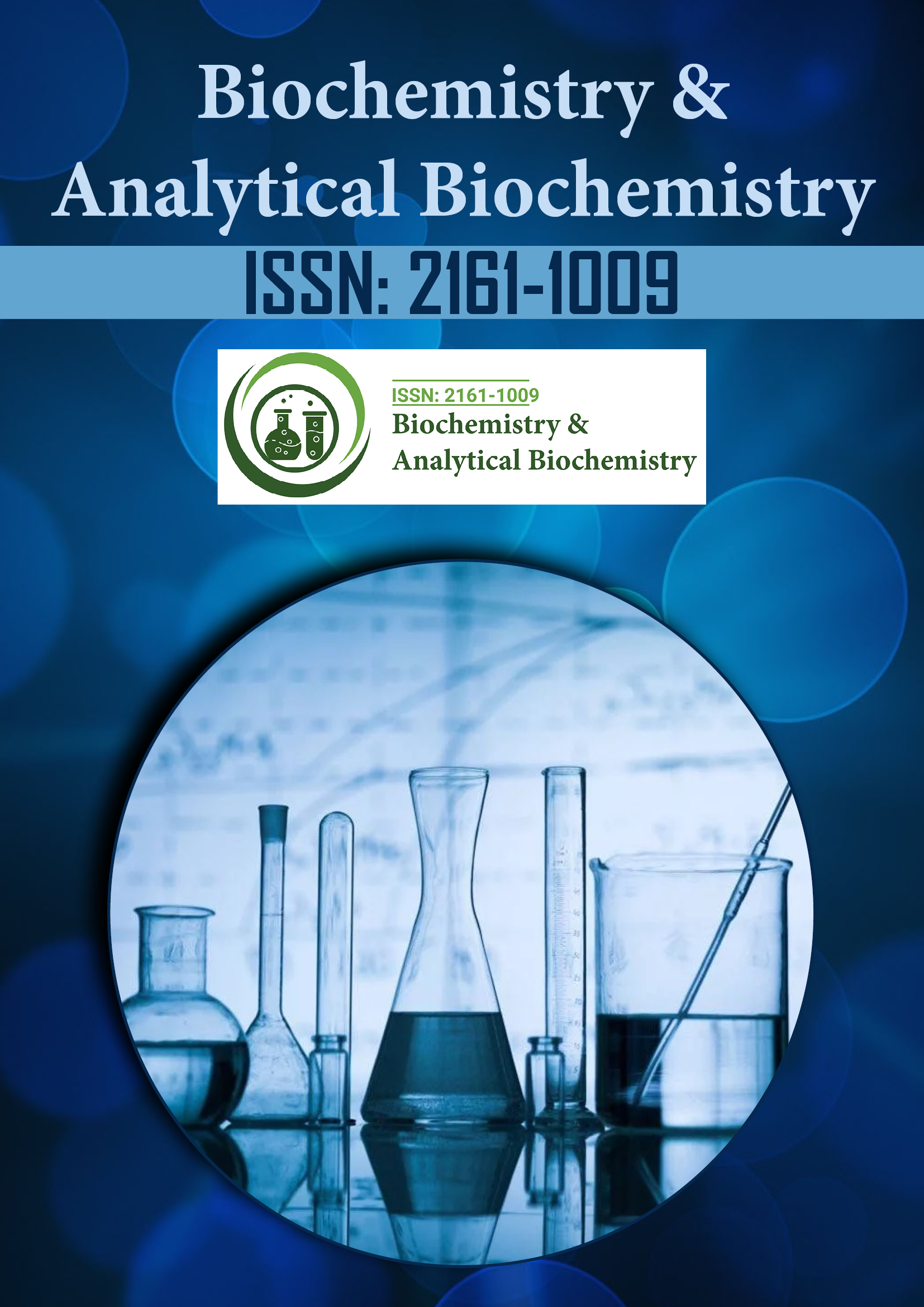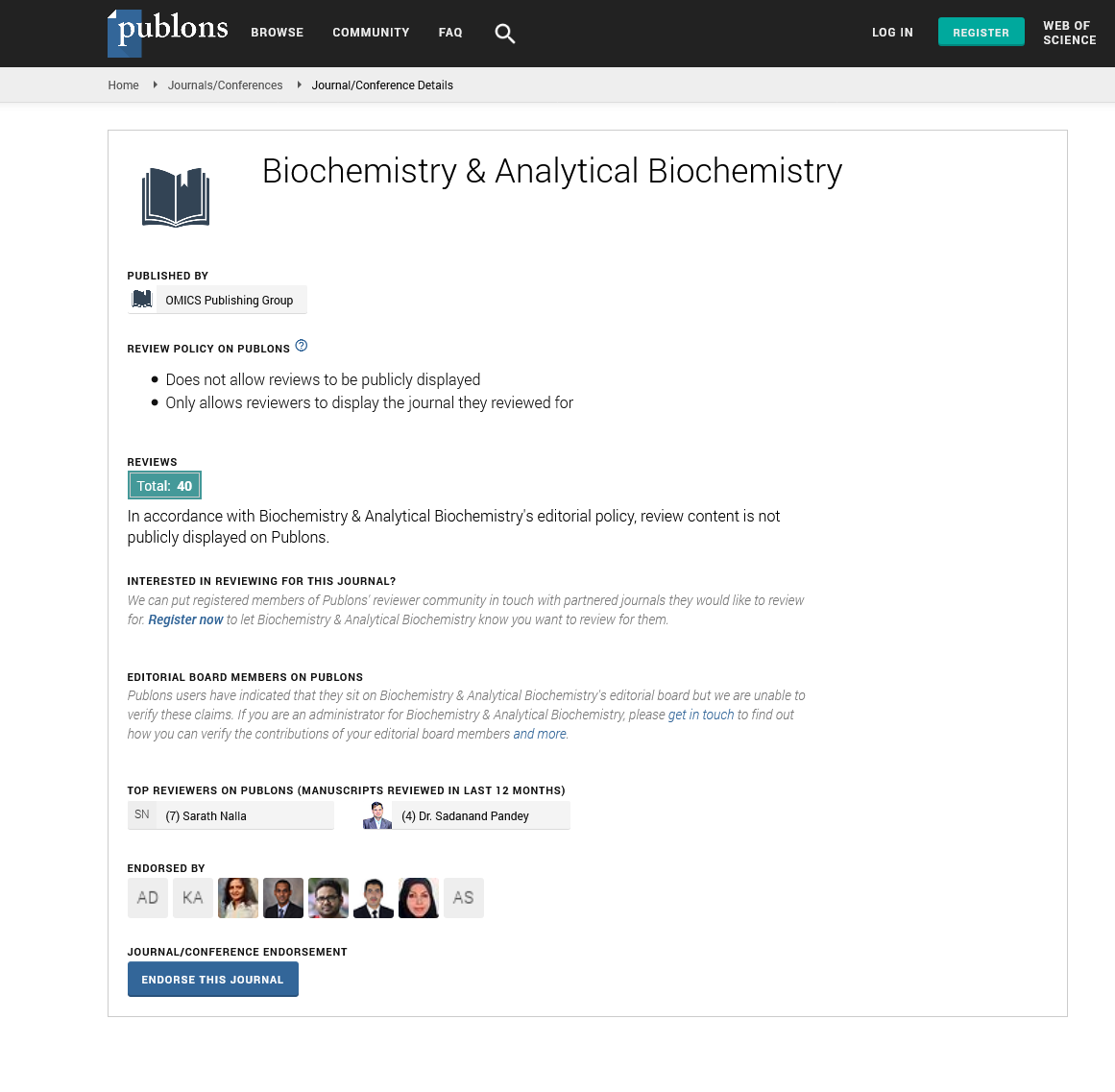Indexed In
- Open J Gate
- Genamics JournalSeek
- ResearchBible
- RefSeek
- Directory of Research Journal Indexing (DRJI)
- Hamdard University
- EBSCO A-Z
- OCLC- WorldCat
- Scholarsteer
- Publons
- MIAR
- Euro Pub
- Google Scholar
Useful Links
Share This Page
Journal Flyer

Open Access Journals
- Agri and Aquaculture
- Biochemistry
- Bioinformatics & Systems Biology
- Business & Management
- Chemistry
- Clinical Sciences
- Engineering
- Food & Nutrition
- General Science
- Genetics & Molecular Biology
- Immunology & Microbiology
- Medical Sciences
- Neuroscience & Psychology
- Nursing & Health Care
- Pharmaceutical Sciences
Perspective - (2025) Volume 14, Issue 2
Redox Biology and the Central Role of Reactive Oxygen Species in Cellular Function
Sofia Lindberg*Received: 30-May-2025, Manuscript No. BABCR-25-29498; Editor assigned: 02-Jun-2025, Pre QC No. BABCR-25-29498 (PQ); Reviewed: 16-Jun-2025, QC No. BABCR-25-29498; Revised: 23-Jun-2025, Manuscript No. BABCR-25-29498 (R); Published: 30-Jun-2025, DOI: 10.35248/2161-1009.25.14.582
Description
Redox biology has emerged as a crucial field within biochemistry, focusing on the balance between oxidation and reduction processes that underpin cellular metabolism and signaling. At the center of this balance lie Reactive Oxygen Species (ROS), which include free radicals such as superoxide anion and hydroxyl radical, as well as non-radical molecules like hydrogen peroxide. For decades, ROS were primarily regarded as damaging byproducts of aerobic metabolism, responsible for oxidative stress and cellular injury. However, research has revealed a more nuanced role, where ROS serve as critical signaling molecules that regulate diverse processes ranging from gene expression and immune responses to apoptosis and cell differentiation.
Mitochondria are the primary source of ROS in most cells, as electrons leaking from the respiratory chain reduce oxygen to form superoxide. While excessive ROS production overwhelms antioxidant defenses and causes oxidative damage, controlled ROS generation is essential for normal physiology. Hydrogen peroxide, for example, can diffuse across membranes and act as a second messenger in redox signaling. It modulates the activity of kinases, phosphatases, and transcription factors through reversible oxidation of cysteine residues. This delicate balance highlights the dual nature of ROS as both damaging agents and indispensable regulators.
Antioxidant systems are vital in maintaining redox homeostasis. Enzymatic antioxidants such as superoxide dismutases, catalases, and glutathione peroxidases convert ROS into less harmful molecules, while non-enzymatic antioxidants like vitamin C, vitamin E, and glutathione provide additional protection. The ratio of reduced to oxidized glutathione serves as a key indicator of cellular redox state, reflecting the balance between oxidative stress and antioxidant capacity. Disruption of this balance underlies the pathology of numerous diseases, including cancer, cardiovascular disease, diabetes, and neurodegeneration.
In cancer biology, ROS play a paradoxical role. Elevated ROS levels can promote genomic instability, mutations, and oncogenic transformation. At the same time, ROS are required for tumor progression, angiogenesis, and metastasis. Cancer cells often adapt by upregulating antioxidant systems, enabling them to tolerate high ROS levels. Therapeutic strategies are now exploring ways to exploit this vulnerability, either by further increasing ROS to toxic levels in cancer cells or by inhibiting antioxidant defenses to sensitize them to oxidative stress. Analytical techniques such as electron spin resonance spectroscopy and mass spectrometry have been instrumental in quantifying ROS and identifying oxidative modifications in biomolecules, providing insights into tumor biology and therapeutic opportunities.
In the cardiovascular system, ROS are implicated in hypertension, atherosclerosis, and ischemia-reperfusion injury. Oxidative modification of lipids, particularly Low-Density Lipoprotein (LDL), contributes to plaque formation and progression of atherosclerosis. In the nervous system, oxidative stress is closely linked to neurodegenerative diseases such as Alzheimer’s and Parkinson’s, where excess ROS damage neurons and impair mitochondrial function. Diabetes also involves redox imbalance, with ROS contributing to insulin resistance and vascular complications. These examples underscore the wide-reaching impact of redox biology on human health.
ROS also play beneficial roles in immunity and host defense. Phagocytic cells such as neutrophils and macrophages produce high levels of ROS through the NADPH oxidase complex, generating oxidative bursts that kill invading pathogens. At the same time, dysregulated ROS production in chronic inflammation can damage host tissues, highlighting the fine line between protection and pathology.
Technological advances are driving new discoveries in redox biology. Fluorescent probes allow real-time imaging of ROS in living cells, while redox proteomics identifies cysteine oxidation sites on proteins. Integration of redox data with metabolomics and transcriptomics is providing systems-level insights into how ROS regulate cellular networks. Machine learning approaches are also being applied to predict redox-sensitive sites and interpret complex datasets.
Looking to the future, redox biology offers significant opportunities for therapeutic innovation. Redox-based therapies are being developed to treat cancer, cardiovascular disease, and neurodegeneration, either by modulating ROS production or by targeting redox-sensitive signaling pathways. Personalized medicine approaches that profile redox status may help identify patients most likely to benefit from such treatments. At the same time, dietary and lifestyle interventions that modulate redox balance, such as antioxidant-rich diets and exercise, remain important components of disease prevention.
Citation: Lindberg S (2025). Redox Biology and the Central Role of Reactive Oxygen Species in Cellular Function. Biochem Anal Biochem. 14:582
Copyright: © 2025 Lindberg S. This is an open access article distributed under the terms of the Creative Commons Attribution License, which permits unrestricted use, distribution, and reproduction in any medium, provided the original author and source are credited.

